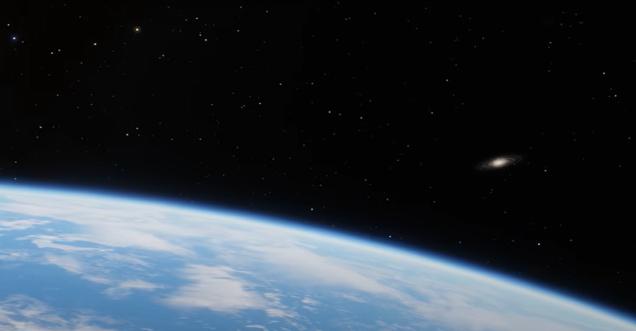
Other possible ways to travel around the galaxy
Intergalactic travel is the hypothetical crewed or uncrewed travel between galaxies. Due to the enormous distances between the Milky Way and its closest neighbours, any such venture would be far more technologically and financially demanding than interstellar travel. Intergalactic distances are roughly a hundred-thousandfold (five orders of magnitude) more significant than their interstellar counterparts. The technology required to travel between galaxies is far beyond humanity's present capabilities and currently only the subject of speculation, hypothesis, and science fiction1
Travelling around the galaxy, and even within our solar system, presents significant challenges due to the vast distances and the limitations of current technology. However, scientists and science fiction writers have proposed various theoretical concepts for interstellar and intergalactic travel. There are several ways to travel around the galaxy, but none are feasible with our current technology. Here are a few ideas:
Some of these ideas include:
1. Generation Ships: Generation ships are massive spacecraft designed to carry multiple generations of humans on long journeys through space. The idea is to create self-sustaining ecosystems within the ship to support life for hundreds or thousands of years. This concept relies on the idea that future generations will continue the journey, eventually reaching their destination.
2. Cryogenic Suspended Animation: In this concept, astronauts or passengers would be placed in a state of suspended animation, effectively "frozen" in time. This could allow them to endure the long journey to distant stars while ageing very little. Research in cryogenics is ongoing, but this technology is currently speculative.
3. Warp Drives: Popularized by science fiction, warp drives are theoretical propulsion systems that could enable faster-than-light (FTL) travel. They work by warping or distorting space-time around a spacecraft, effectively allowing it to travel faster than the speed of light. Theoretical physics, such as the Alcubierre drive, explores these purely speculative concepts.
4. Solar Sails: Solar sails use the pressure of sunlight to propel a spacecraft. While not suitable for interstellar travel, they can be used for efficient travel within the solar system. The Planetary Society's LightSail 2 is an example of a successful solar sail mission.
5. Fusion Propulsion: Fusion propulsion involves using nuclear fusion, the same process that powers stars, to propel a spacecraft. Fusion could provide high thrust and efficiency, potentially enabling faster travel within our solar system and beyond. However, practical fusion propulsion systems are still in research and development.
6. Nanocraft and Breakthrough Starshot: This concept aims to send tiny, light-propelled spacecraft to nearby stars. These nanocrafts would be accelerated to a significant fraction of the speed of light by powerful lasers or other means. The Breakthrough Starshot project is actively researching this idea.
7. Black Hole-Powered Travel: Some theoretical concepts involve using the energy of a black hole to power a spacecraft. By harnessing the energy generated by a rotating black hole, it might be possible to achieve significant propulsion.
8. Wormholes: Wormholes are hypothetical shortcuts through space-time that could connect distant parts of the universe. If they exist and can be stabilized, they offer a way to travel vast distances quickly. However, the existence and stability of wormholes remain speculative.
9. Mind Uploading: A more speculative concept involves uploading human consciousness into digital or artificial form, allowing for transmitting information across vast distances at the speed of light. This concept is often explored in science fiction.
10. Hypervelocity stars: Hypervelocity stars are moving at speeds much faster than the escape velocity of the Milky Way galaxy. This means they are eventually ejected from the galaxy and travel into intergalactic space. We could travel to another galaxy if we catch a ride on a hypervelocity star. However, hypervelocity stars are scarce, and it is unclear how we could find one or get close enough to board it without being killed by the radiation.
11. Von Neumann probes: Von Neumann probes are self-replicating spacecraft that could be sent out to explore the galaxy. They would land on planets and moons and collect resources to build new probes. Eventually, they could create a network of probes, allowing us to travel to any point in the galaxy. However, Von Neumann probes could also threaten humanity if they are not carefully designed.
It's important to note that many of these concepts are highly theoretical and face significant scientific, engineering, and ethical challenges. While they capture the imagination and inspire research, the practical realization of such technologies is still being determined and may remain in science fiction for the foreseeable future.
















